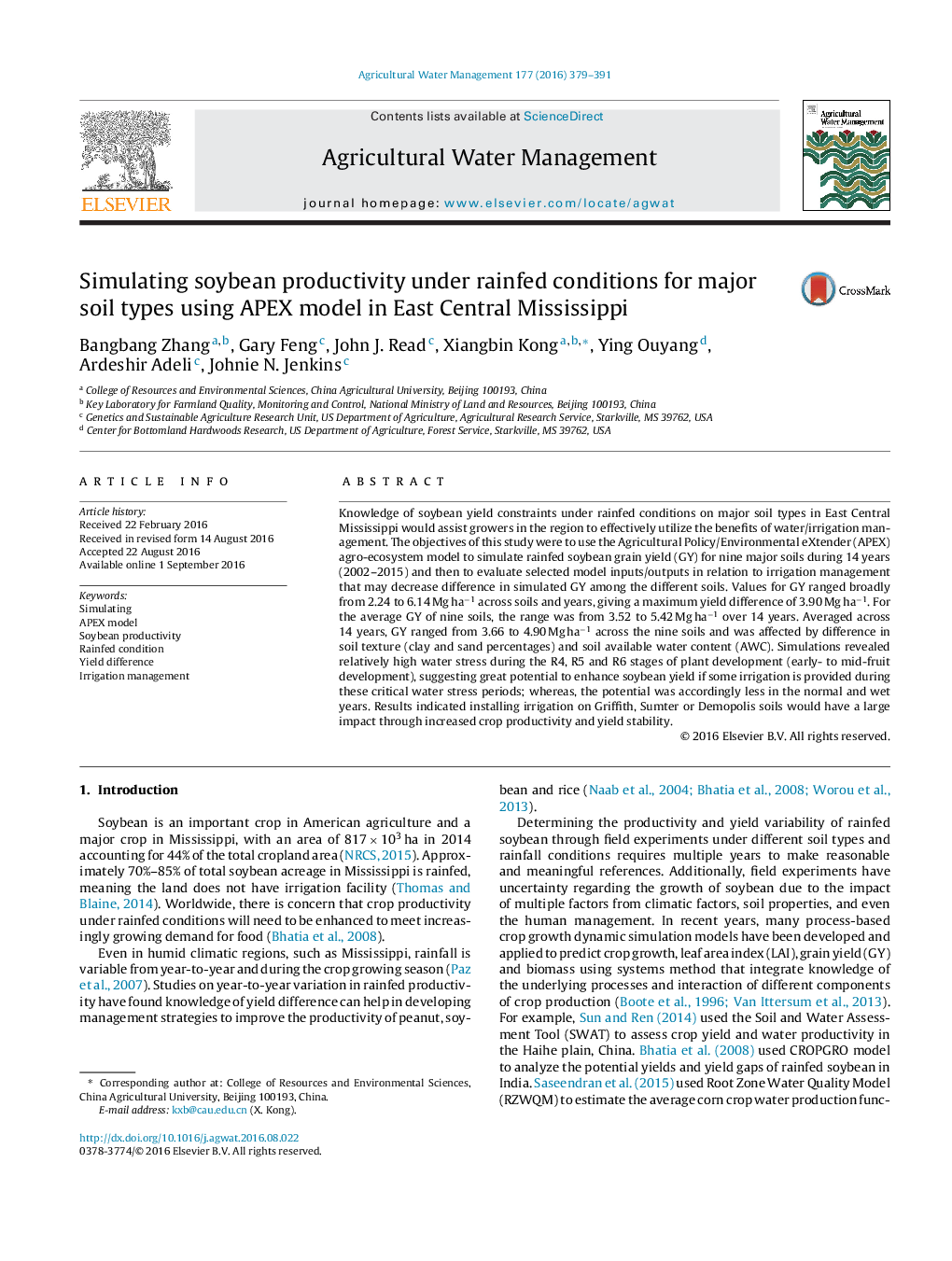| Article ID | Journal | Published Year | Pages | File Type |
|---|---|---|---|---|
| 6363441 | Agricultural Water Management | 2016 | 13 Pages |
Abstract
Knowledge of soybean yield constraints under rainfed conditions on major soil types in East Central Mississippi would assist growers in the region to effectively utilize the benefits of water/irrigation management. The objectives of this study were to use the Agricultural Policy/Environmental eXtender (APEX) agro-ecosystem model to simulate rainfed soybean grain yield (GY) for nine major soils during 14 years (2002-2015) and then to evaluate selected model inputs/outputs in relation to irrigation management that may decrease difference in simulated GY among the different soils. Values for GY ranged broadly from 2.24 to 6.14 Mg haâ1 across soils and years, giving a maximum yield difference of 3.90 Mg haâ1. For the average GY of nine soils, the range was from 3.52 to 5.42 Mg haâ1 over 14 years. Averaged across 14 years, GY ranged from 3.66 to 4.90 Mg haâ1 across the nine soils and was affected by difference in soil texture (clay and sand percentages) and soil available water content (AWC). Simulations revealed relatively high water stress during the R4, R5 and R6 stages of plant development (early- to mid-fruit development), suggesting great potential to enhance soybean yield if some irrigation is provided during these critical water stress periods; whereas, the potential was accordingly less in the normal and wet years. Results indicated installing irrigation on Griffith, Sumter or Demopolis soils would have a large impact through increased crop productivity and yield stability.
Related Topics
Life Sciences
Agricultural and Biological Sciences
Agronomy and Crop Science
Authors
Bangbang Zhang, Gary Feng, John J. Read, Xiangbin Kong, Ying Ouyang, Ardeshir Adeli, Johnie N. Jenkins,
